MCQ 6!
Proof of Completion

Corrections
Question 6
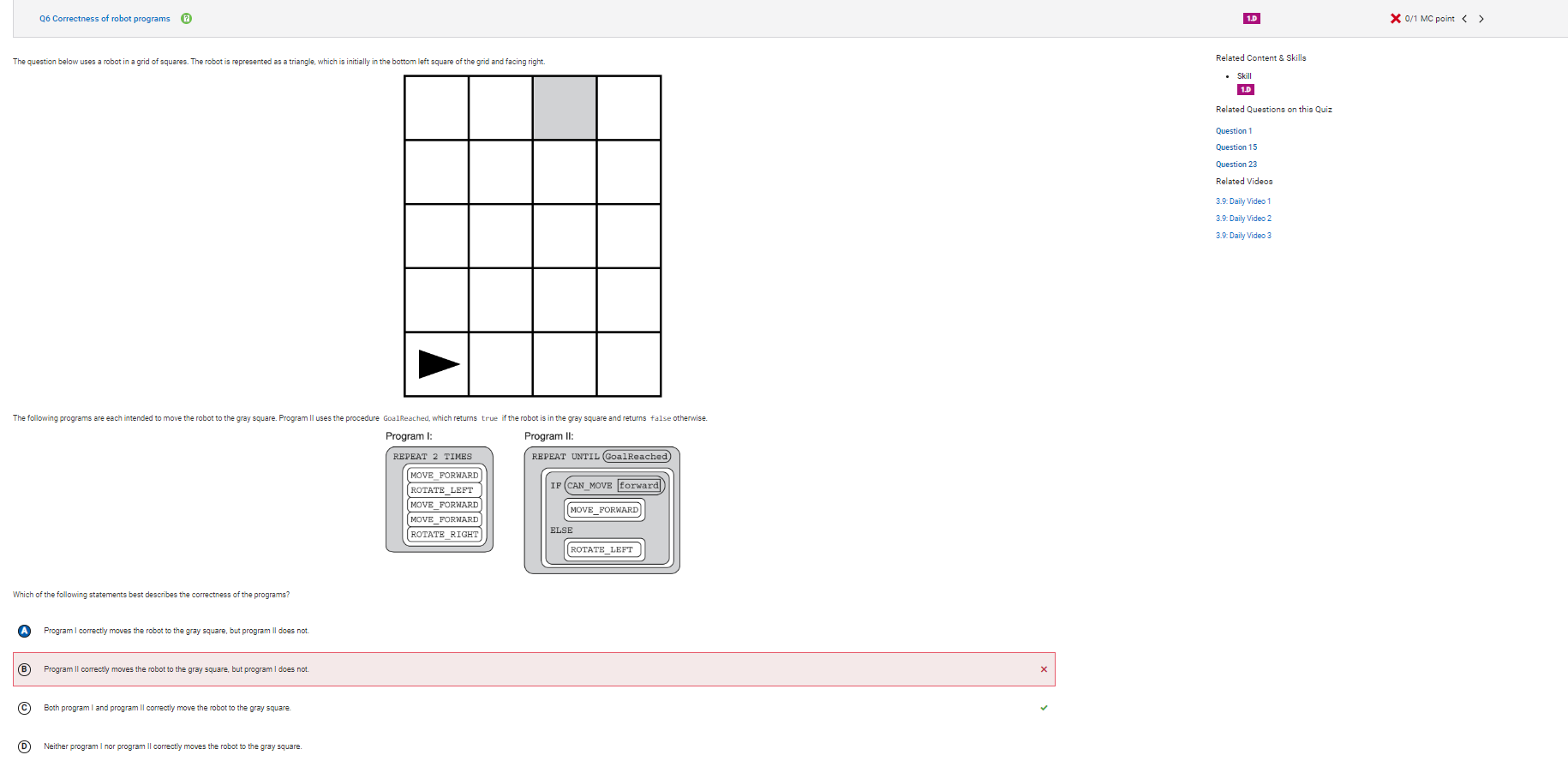
Answer C was the correct answer, as Program I correctly moves the robot to the gray square by repeatedly moving the robot forward, rotating left, moving forward twice, and rotating right. Program II correctly moves the robot to the gray square by moving the robot forward to the bottom right corner of the grid, rotating left, moving the robot forward to the upper right corner of the grid, rotating left, and moving forward to the gray square.
Question 17
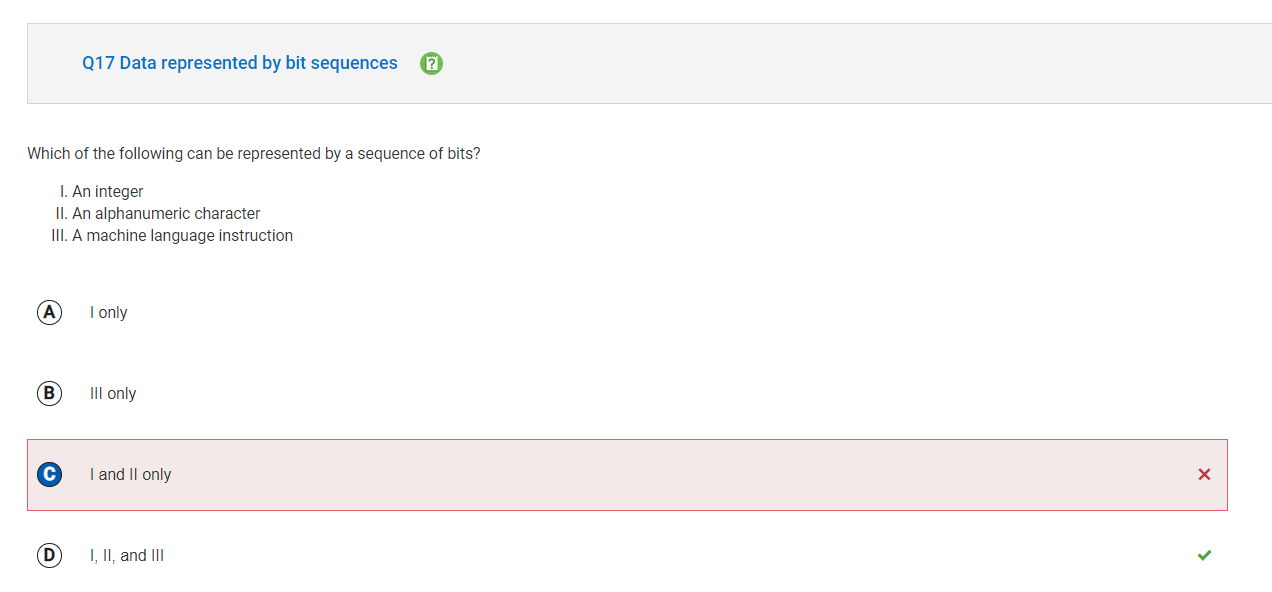
Answer D was the correct answer, as at the lowest level, all digital data (including integers, alphanumeric characters, and machine language instructions) are represented with sequences of bits.
Question 18
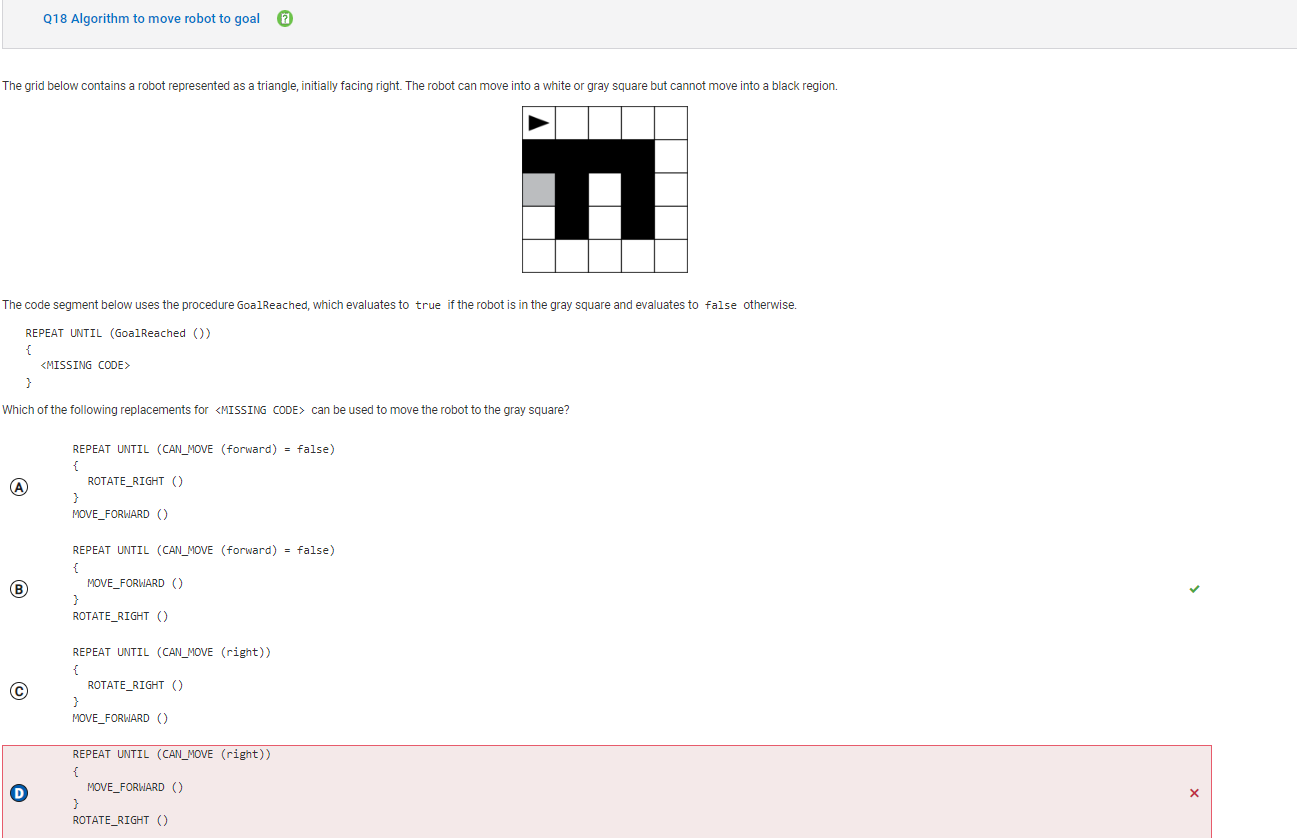
Answer B was the correct answer, as this code segment moves the robot forward whenever there is an open square in front of it. Once there is not an open square in front of it, the robot rotates right. The robot moves forward from its initial location to the upper right corner of the grid, then rotates right, then moves forward to the bottom right corner of the grid, then rotates right, then moves forward to the bottom left corner of the grid, then rotates right, then moves forward two squares to the gray square.
Question 33
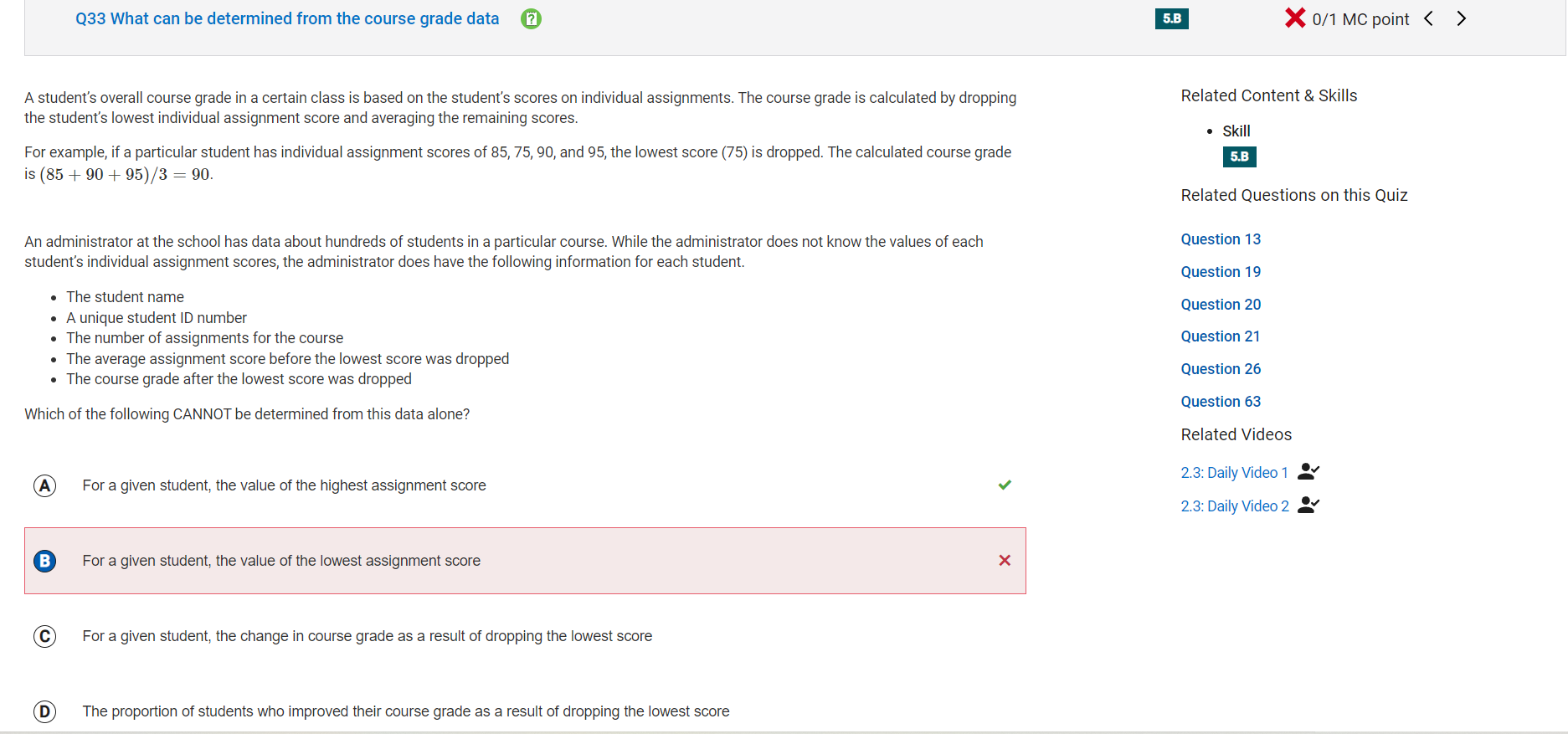
This option is correct. The flowchart sets include to true whenever floor is greater than 1 0 or bedrooms equal 3, and sets include to false otherwise. Therefore, the algorithm is equivalent to Include, left arrow, open parenthesis, floor greater than 10, close parenthesis, OR, open parenthesis, bedrooms equal 3, close parenthesis
Question 36
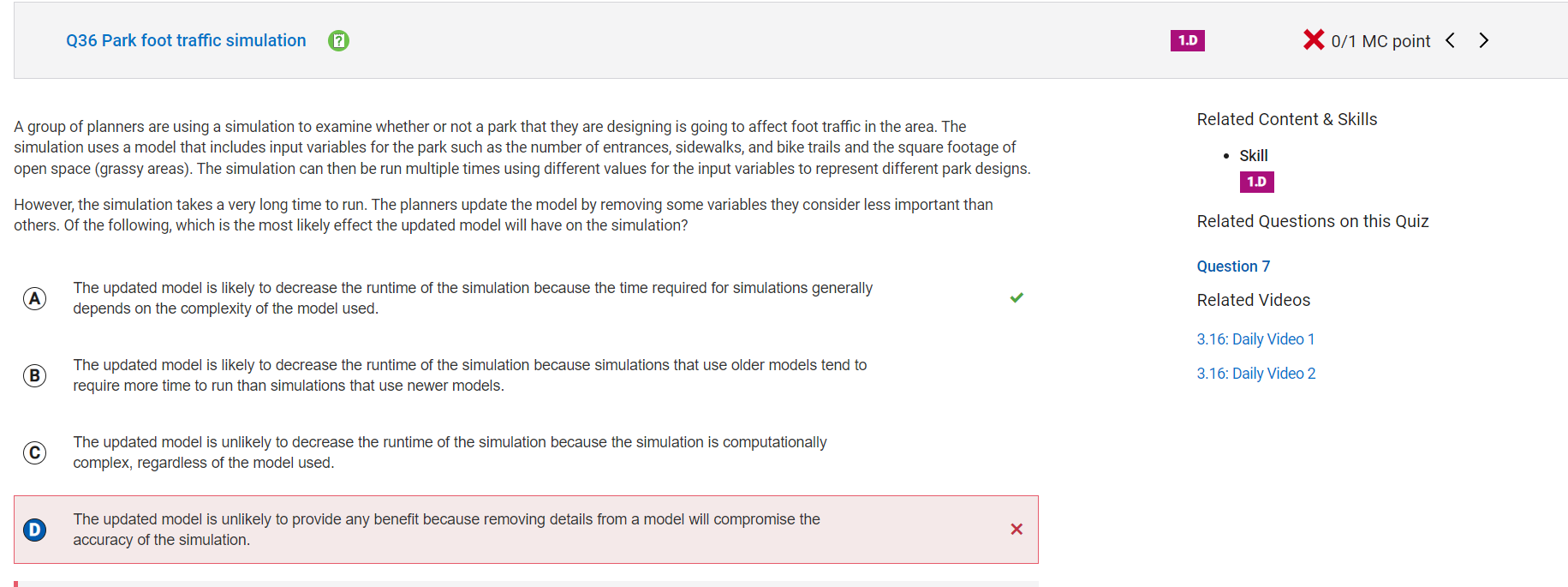
This option is correct. With a 4-bit integer representation, 2 to the fourth power values can be represented, which allows for the values between 0 to 1 5, inclusive. If an operation results in a value greater than 1 5, an overflow error will occur. Of the operations given in the options, only 10 plus 7 gives a result larger than 1 5.
Question 38

This option is correct. The value of count starts at 1 and increases by twos, so it counts odd integers. The loop iterates 10 times, adding each intermediate value of count each time. Therefore, the program displays the sum of the odd integers starting at 1 and ending at 19.
Question 39

The correct answer is B. This expression concatenates the first two letters of Open quotation, Harp, close quotation with the last three letters of Open quotation, puppy, close quotation, resulting in Open quotation, Happy, close quotation.
Question 49

The correct answer is B. This expression concatenates the first two letters of Open quotation, Harp, close quotation with the last three letters of Open quotation, puppy, close quotation, resulting in Open quotation, Happy, close quotation.
Question 52
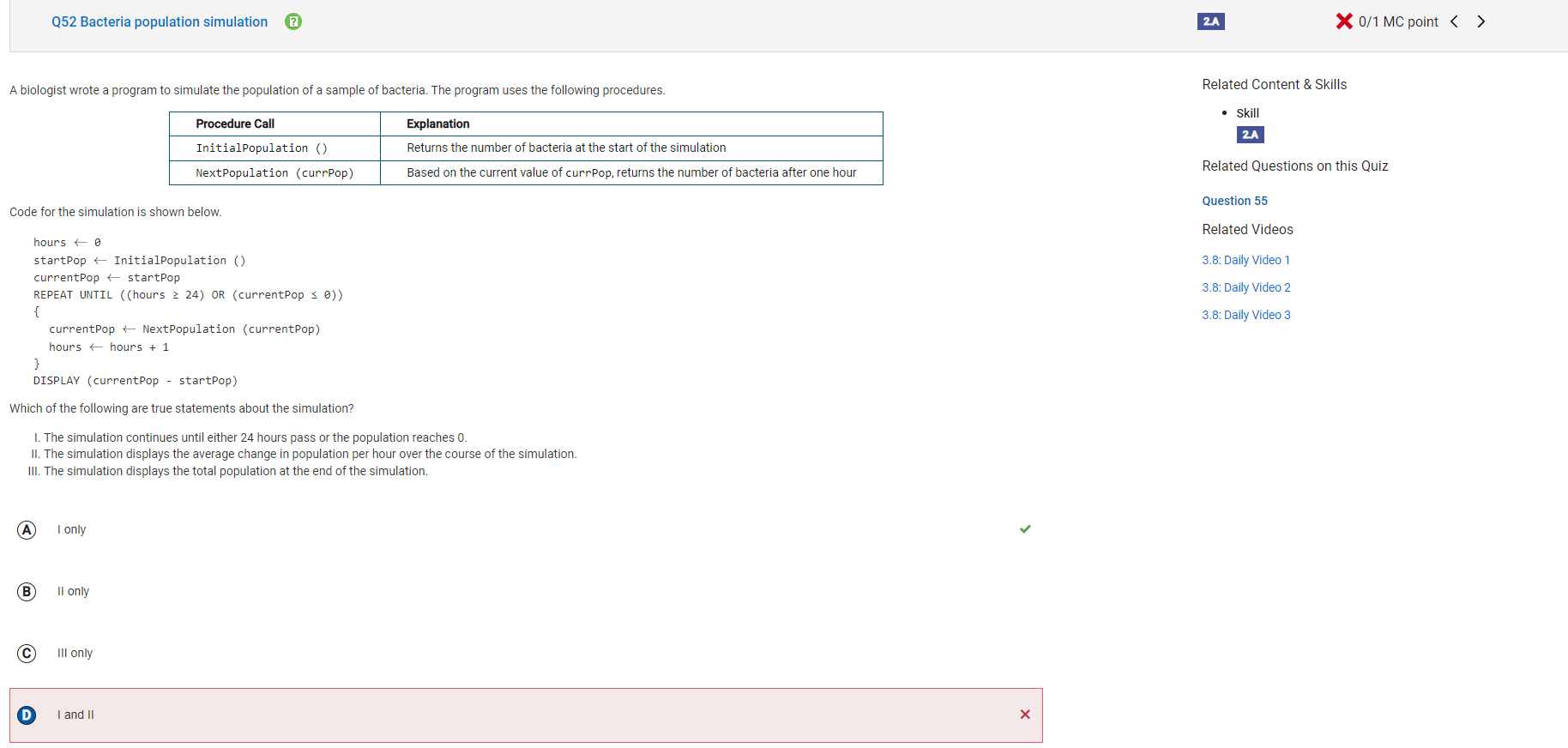
The correct answer is B. This expression concatenates the first two letters of Open quotation, Harp, close quotation with the last three letters of Open quotation, puppy, close quotation, resulting in Open quotation, Happy, close quotation.
Question 58
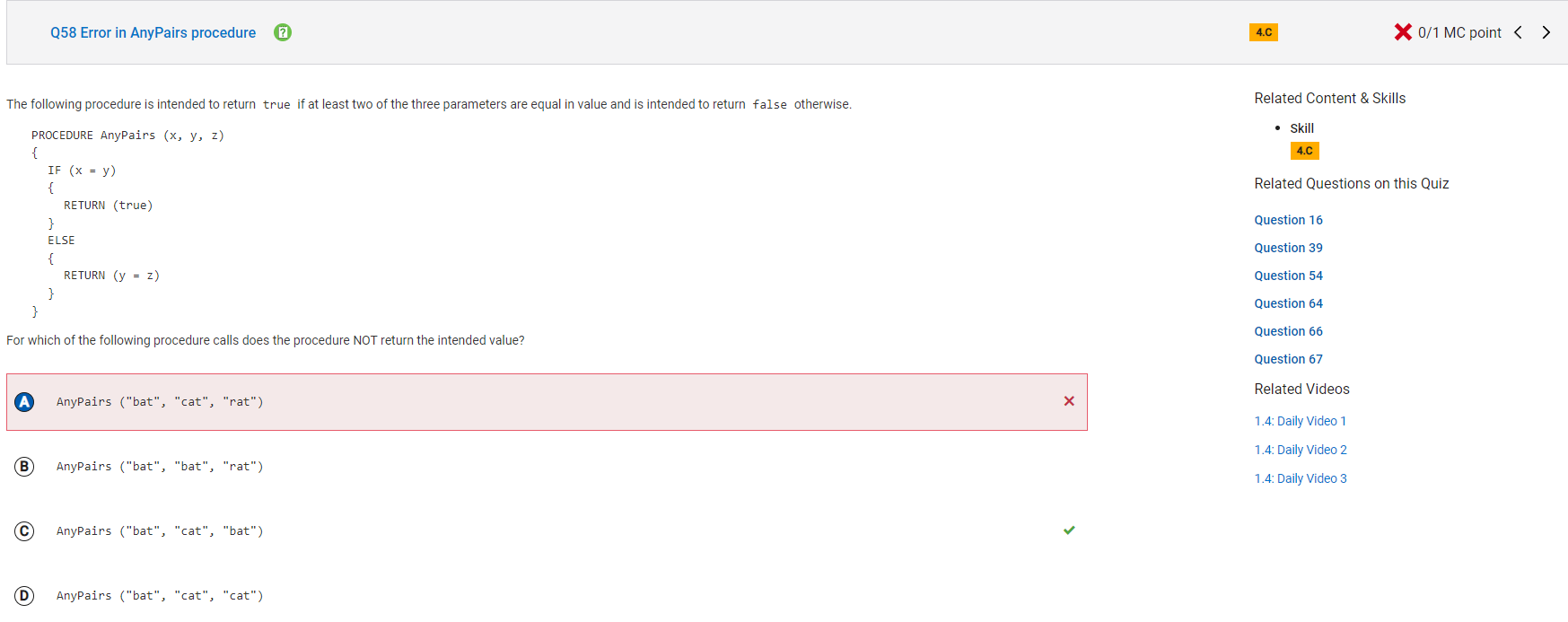
The correct answer is B. This expression concatenates the first two letters of Open quotation, Harp, close quotation with the last three letters of Open quotation, puppy, close quotation, resulting in Open quotation, Happy, close quotation.
Question 60
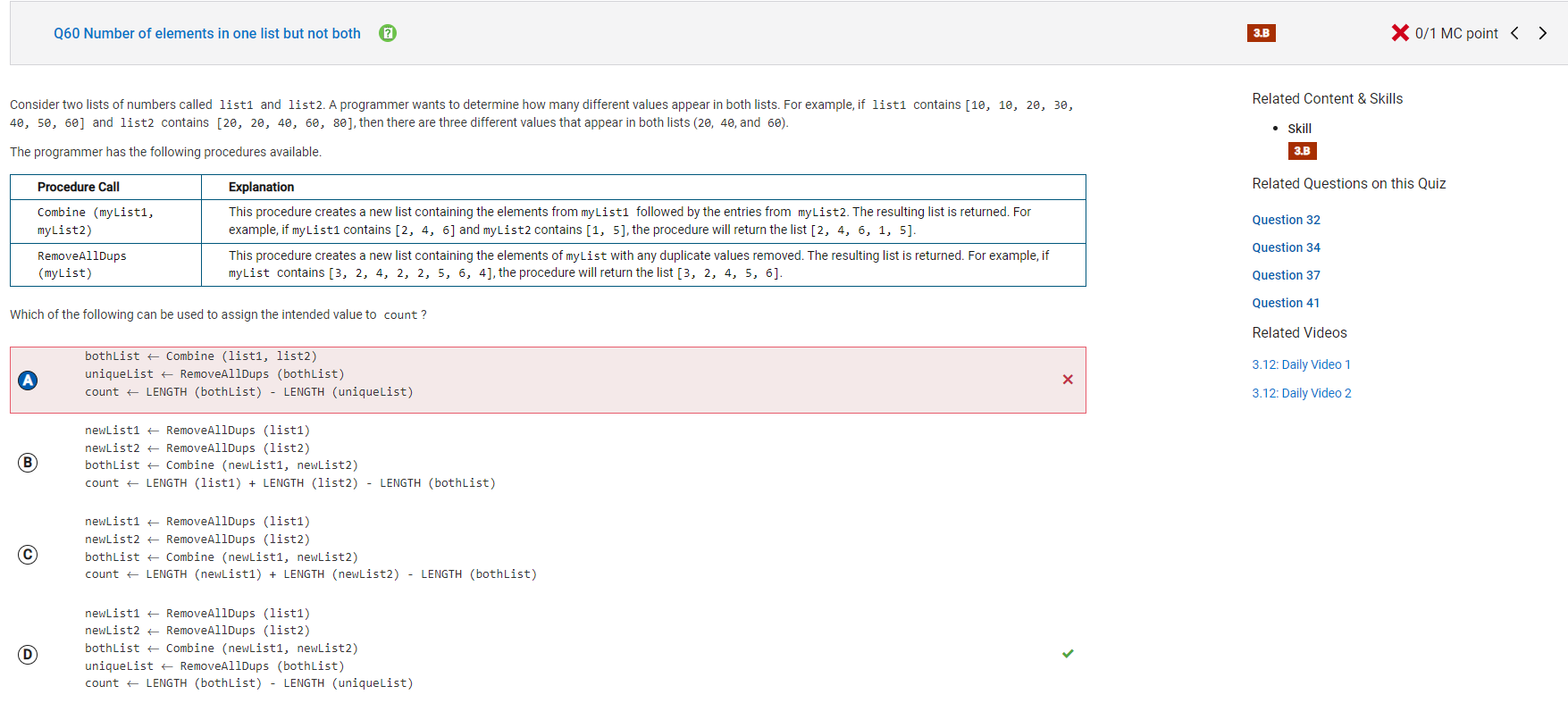
The correct answer is B. This expression concatenates the first two letters of Open quotation, Harp, close quotation with the last three letters of Open quotation, puppy, close quotation, resulting in Open quotation, Happy, close quotation.
Question 62
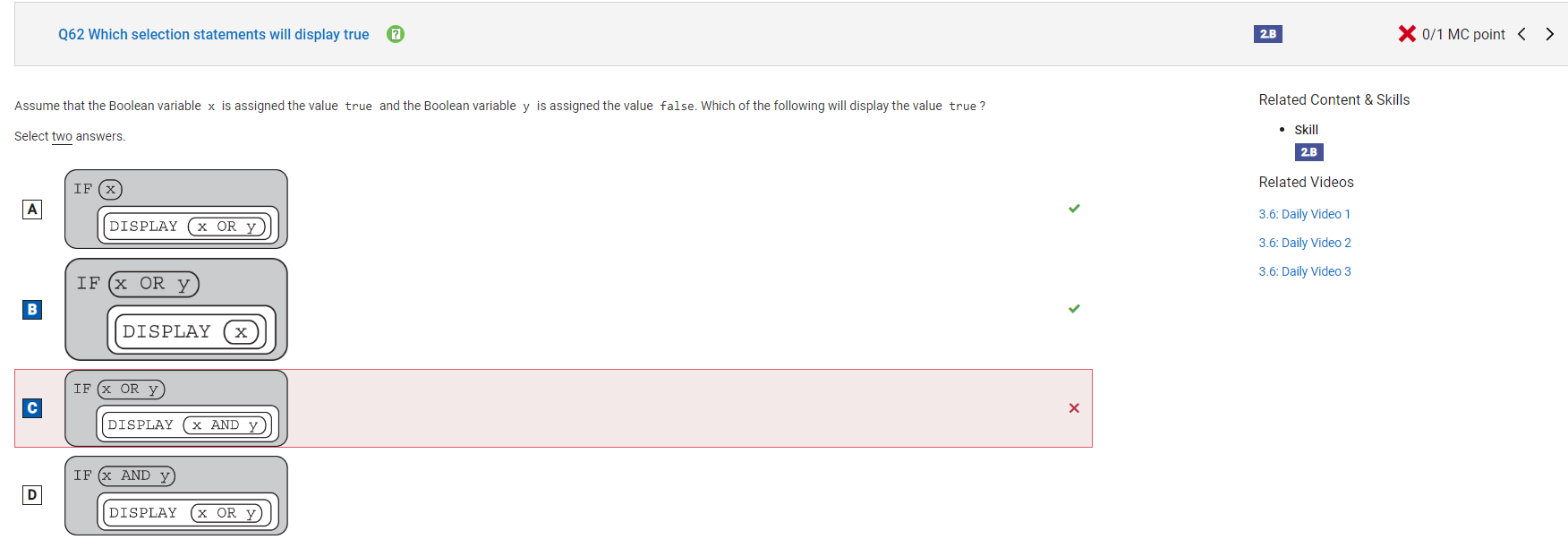
The correct answer is B. This expression concatenates the first two letters of Open quotation, Harp, close quotation with the last three letters of Open quotation, puppy, close quotation, resulting in Open quotation, Happy, close quotation.